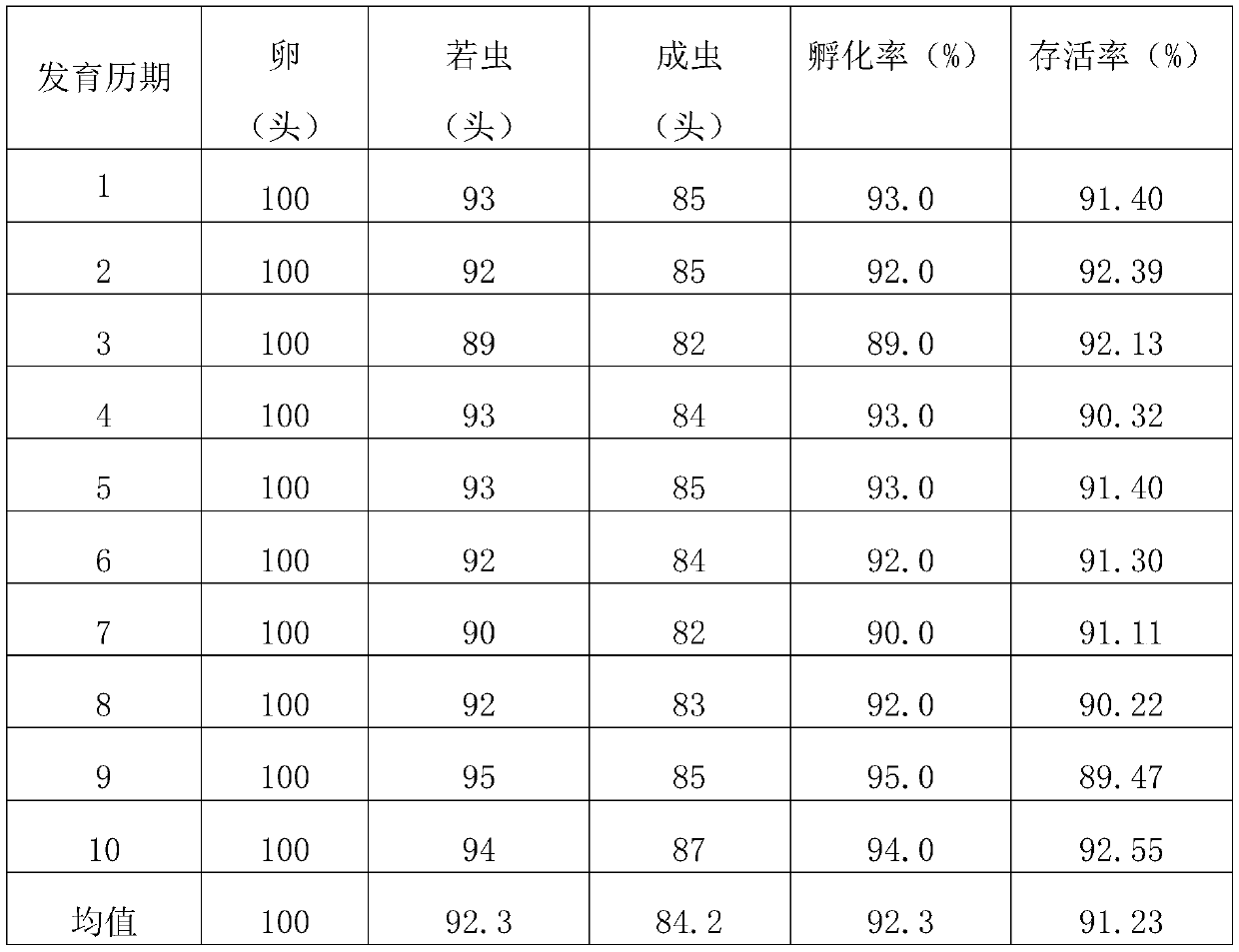Method for artificially breeding riptortus pedestris
A kind of bee stinkbug, artificial technology, applied in animal feed, animal feed, application, etc., to achieve low feeding cost, simple method, and increase the effect of mating space
- Summary
- Abstract
- Description
- Claims
- Application Information
AI Technical Summary
Problems solved by technology
Method used
Image
Examples
Embodiment 1
[0034] Example 1 Taking cowpea as feedstuffs test for artificially raising stink bugs
[0035] Proceed as follows:
[0036] (1) Feed pretreatment: buy fresh cowpea just picked from the market, clean the fresh cowpea skin without worms with tap water, and the cleaning time is 4 minutes; then dry naturally until the skin is dry, and then irradiate under ultraviolet light 2h for surface disinfection.
[0037] (2) 700g of fresh cowpea described in step (1) is put into a square insect cage (purchased in the market) with a length, width and height of 350mm, and then 50 male and female adults of the stinkbug stinkbug are placed in the insect culture. Breeding in cages, the temperature is 24°C, the light conditions are 14L:10D, and the relative humidity is 60% for rearing in an insect culture room; wherein, cowpeas are put in once every 2 days, and 700g is put in each time.
[0038] (3) In step (2), the adults start to lay eggs after being reared for 13 days, collect the eggs, place...
PUM
 Login to View More
Login to View More Abstract
Description
Claims
Application Information
 Login to View More
Login to View More - R&D
- Intellectual Property
- Life Sciences
- Materials
- Tech Scout
- Unparalleled Data Quality
- Higher Quality Content
- 60% Fewer Hallucinations
Browse by: Latest US Patents, China's latest patents, Technical Efficacy Thesaurus, Application Domain, Technology Topic, Popular Technical Reports.
© 2025 PatSnap. All rights reserved.Legal|Privacy policy|Modern Slavery Act Transparency Statement|Sitemap|About US| Contact US: help@patsnap.com


